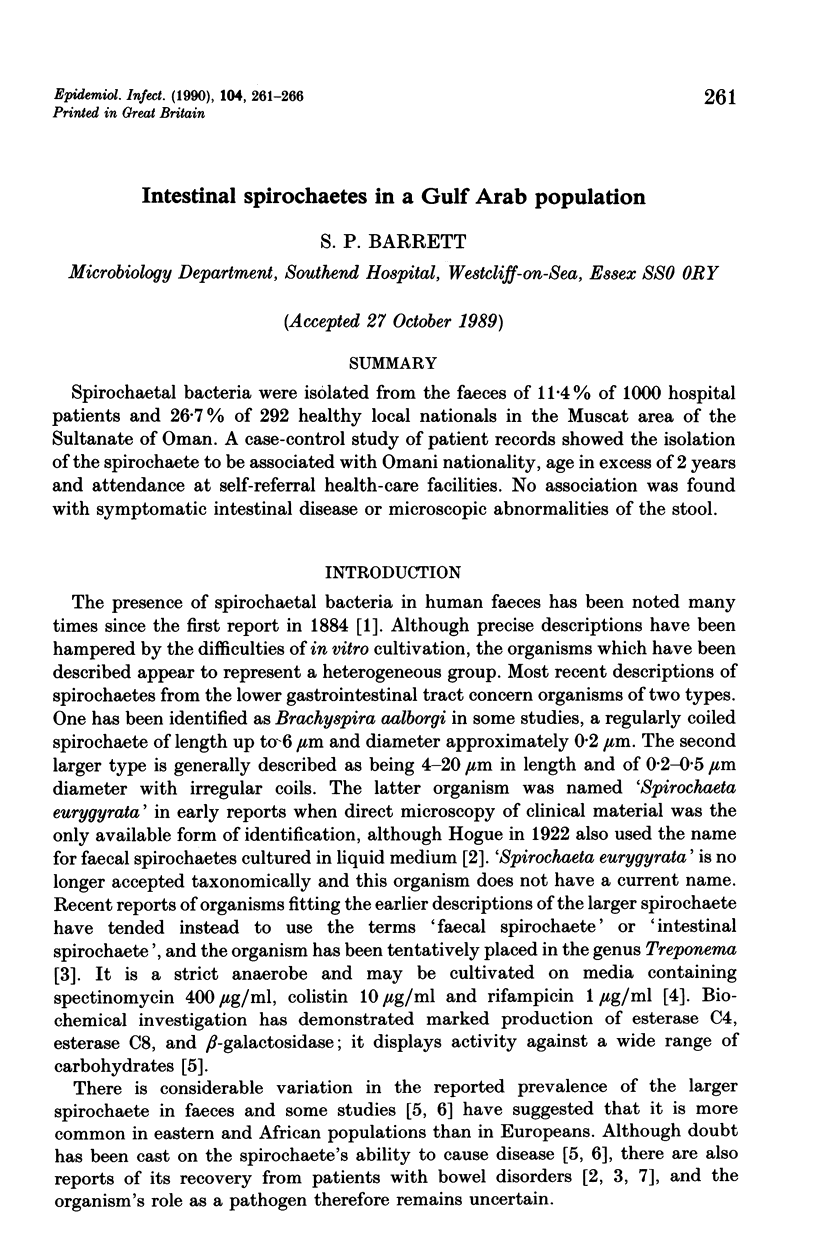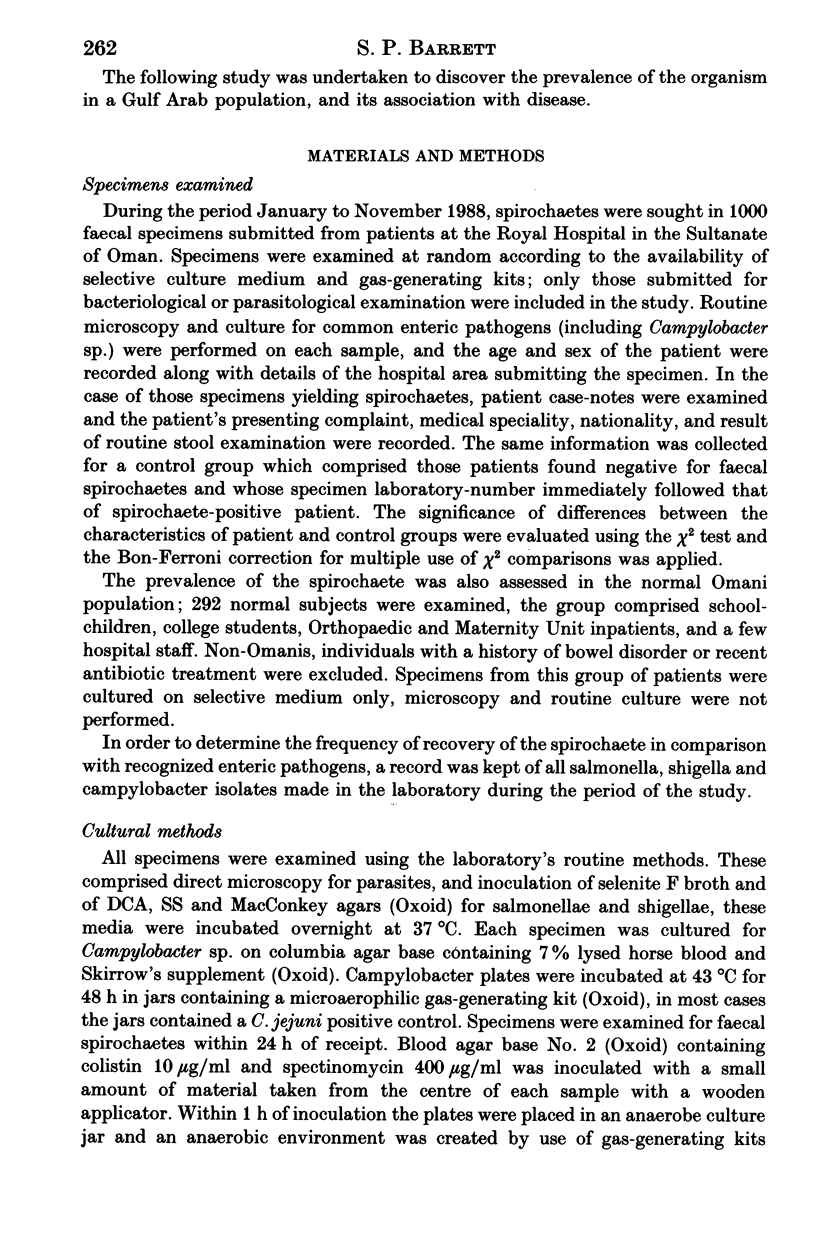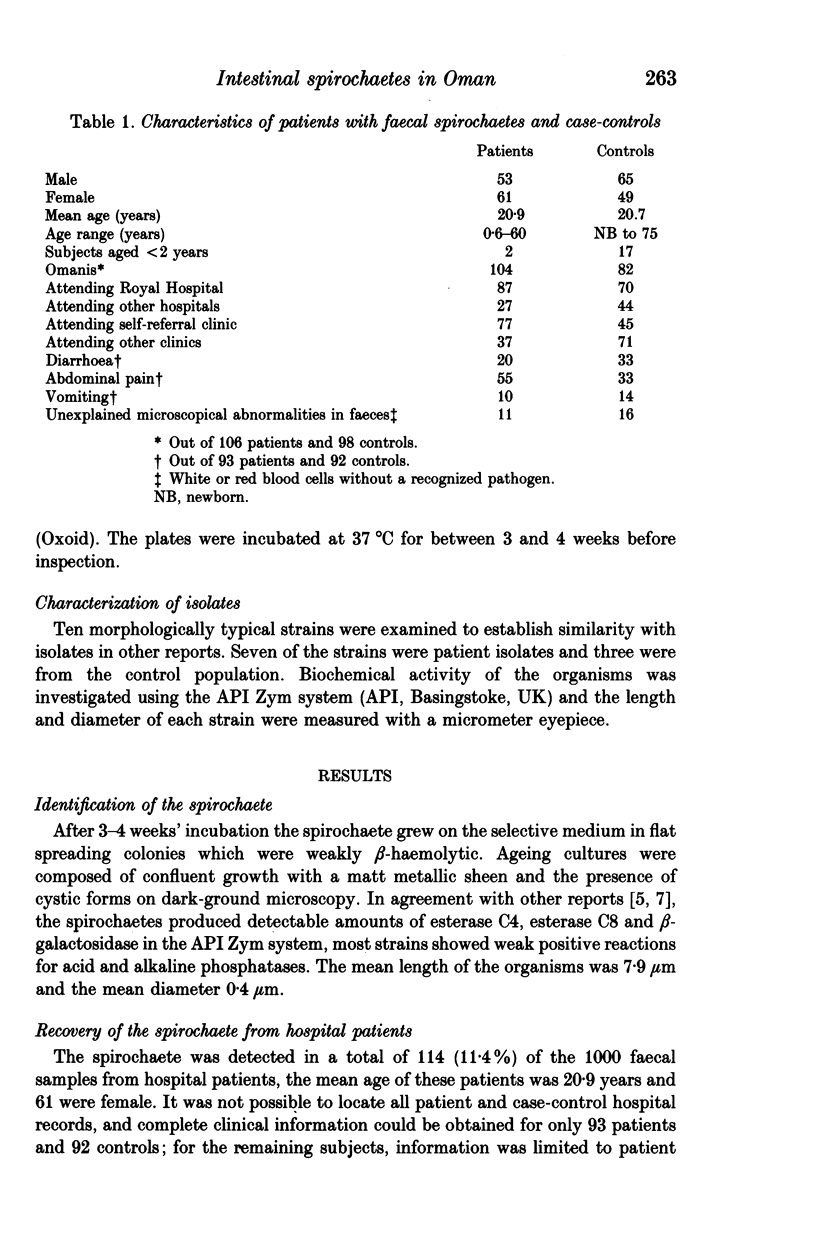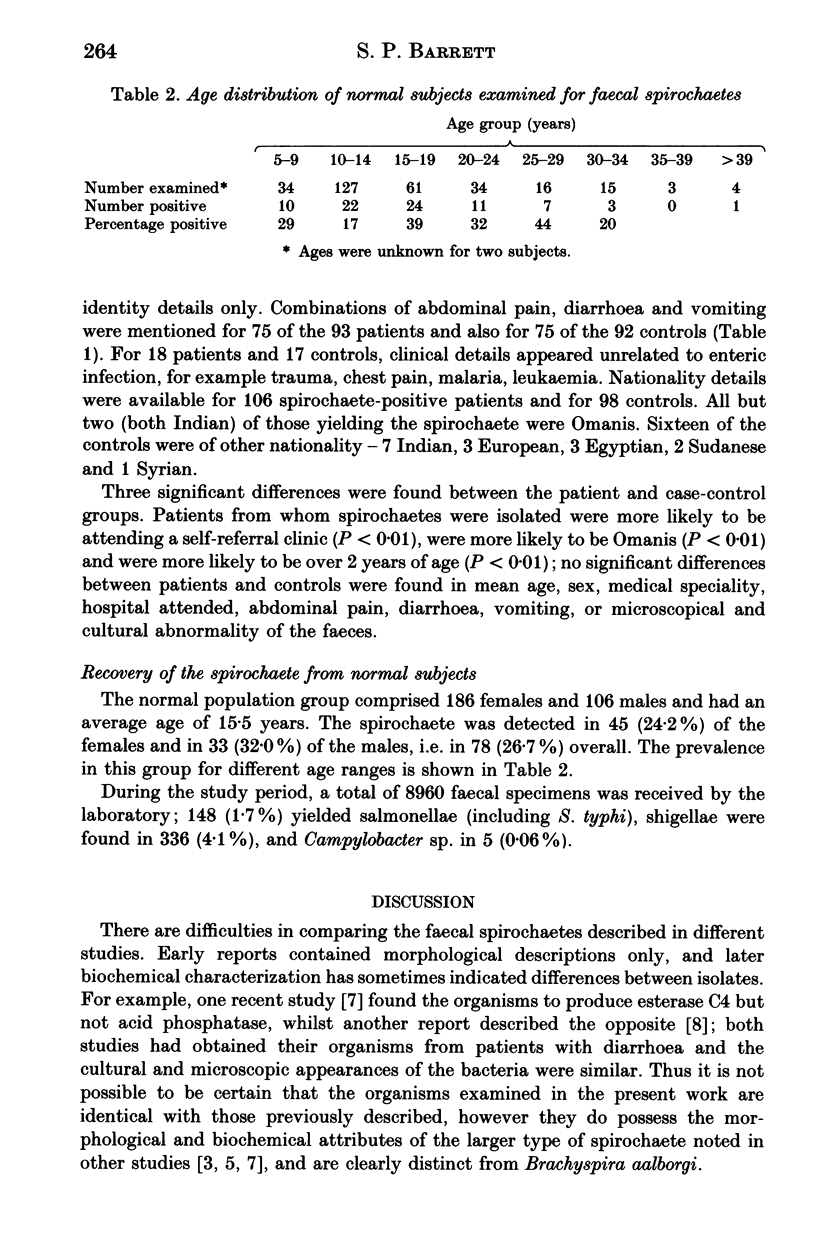Abstract
Spirochaetal bacteria were isolated from the faeces of 11.4% of 1000 hospital patients and 26.7% of 292 healthy local nationals in the Muscat area of the Sultanate of Oman. A case-control study of patient records showed the isolation of the spirochaete to be associated with Omani nationality, age in excess of 2 years and attendance at self-referral health-care facilities. No association was found with symptomatic intestinal disease or microscopic abnormalities of the stool.
Full text
PDF





Selected References
These references are in PubMed. This may not be the complete list of references from this article.
- Coene M., Agliano A. M., Paques A. T., Cattani P., Dettori G., Sanna A., Cocito C. Comparative analysis of the genomes of intestinal spirochetes of human and animal origin. Infect Immun. 1989 Jan;57(1):138–145. doi: 10.1128/iai.57.1.138-145.1989. [DOI] [PMC free article] [PubMed] [Google Scholar]
- Cooper C., Cotton D. W., Hudson M. J., Kirkham N., Wilmott F. E. Rectal spirochaetosis in homosexual men: characterisation of the organism and pathophysiology. Genitourin Med. 1986 Feb;62(1):47–52. doi: 10.1136/sti.62.1.47. [DOI] [PMC free article] [PubMed] [Google Scholar]
- Harland W. A., Lee F. D. Intestinal spirochaetosis. Br Med J. 1967 Sep 16;3(5567):718–719. doi: 10.1136/bmj.3.5567.718. [DOI] [PMC free article] [PubMed] [Google Scholar]
- Jones M. J., Miller J. N., George W. L. Microbiological and biochemical characterization of spirochetes isolated from the feces of homosexual males. J Clin Microbiol. 1986 Dec;24(6):1071–1074. doi: 10.1128/jcm.24.6.1071-1074.1986. [DOI] [PMC free article] [PubMed] [Google Scholar]
- Nielsen R. H., Orholm M., Pedersen J. O., Hovind-Hougen K., Teglbjaerg P. S., Thaysen E. H. Colorectal spirochetosis: clinical significance of the infestation. Gastroenterology. 1983 Jul;85(1):62–67. [PubMed] [Google Scholar]
- Ruane P. J., Nakata M. M., Reinhardt J. F., George W. L. Spirochete-like organisms in the human gastrointestinal tract. Rev Infect Dis. 1989 Mar-Apr;11(2):184–196. doi: 10.1093/clinids/11.2.184. [DOI] [PubMed] [Google Scholar]
- Tompkins D. S., Foulkes S. J., Godwin P. G., West A. P. Isolation and characterisation of intestinal spirochaetes. J Clin Pathol. 1986 May;39(5):535–541. doi: 10.1136/jcp.39.5.535. [DOI] [PMC free article] [PubMed] [Google Scholar]
- Tompkins D. S., Foulkes S. J., Godwin P. G., West A. P. Isolation and characterisation of intestinal spirochaetes. J Clin Pathol. 1986 May;39(5):535–541. doi: 10.1136/jcp.39.5.535. [DOI] [PMC free article] [PubMed] [Google Scholar]
- Tompkins D. S., Waugh M. A., Cooke E. M. Isolation of intestinal spirochaetes from homosexuals. J Clin Pathol. 1981 Dec;34(12):1385–1387. doi: 10.1136/jcp.34.12.1385. [DOI] [PMC free article] [PubMed] [Google Scholar]


